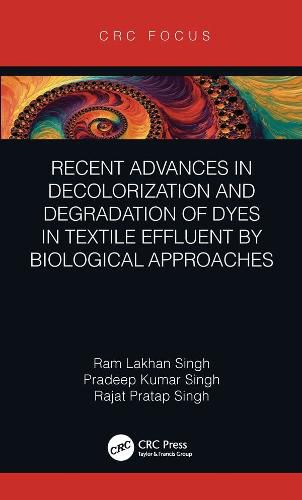Readings Newsletter
Become a Readings Member to make your shopping experience even easier.
Sign in or sign up for free!
You’re not far away from qualifying for FREE standard shipping within Australia
You’ve qualified for FREE standard shipping within Australia
The cart is loading…






Recent Advances in Decolorization and Degradation of Dyes in Textile Effluent by Biological Approaches outlines various eco-friendly, cost effective methods for removal of toxic textile dyes. Large amounts of dye are unbound and released into the environment due to inefficient dyeing processes. The release of wastewater containing dye into the environment has several adverse effects as it is toxic, mutagenic and has other undesirable effects on living organisms. Hence, it is necessary to remove these dyes from industrial effluents to have a sustainable environment. This book deals with conventional as well as advanced effective treatment methods for the removal of dyes in order to increase the domain knowledge of readers.
Salient features:
Describes physico-chemical characteristics of textile effluent, dye classes and toxicity of dyes commonly used in the textile industry
Assembles effective approaches which are used to remove dyes from textile effluent prior to their release into the environment
Presents several advanced approaches such as genetic engineering, nanotechnology, immobilized cells or enzymes, biofilms and microbial fuel cells, etc. for the removal of dyes.
$9.00 standard shipping within Australia
FREE standard shipping within Australia for orders over $100.00
Express & International shipping calculated at checkout
Recent Advances in Decolorization and Degradation of Dyes in Textile Effluent by Biological Approaches outlines various eco-friendly, cost effective methods for removal of toxic textile dyes. Large amounts of dye are unbound and released into the environment due to inefficient dyeing processes. The release of wastewater containing dye into the environment has several adverse effects as it is toxic, mutagenic and has other undesirable effects on living organisms. Hence, it is necessary to remove these dyes from industrial effluents to have a sustainable environment. This book deals with conventional as well as advanced effective treatment methods for the removal of dyes in order to increase the domain knowledge of readers.
Salient features:
Describes physico-chemical characteristics of textile effluent, dye classes and toxicity of dyes commonly used in the textile industry
Assembles effective approaches which are used to remove dyes from textile effluent prior to their release into the environment
Presents several advanced approaches such as genetic engineering, nanotechnology, immobilized cells or enzymes, biofilms and microbial fuel cells, etc. for the removal of dyes.